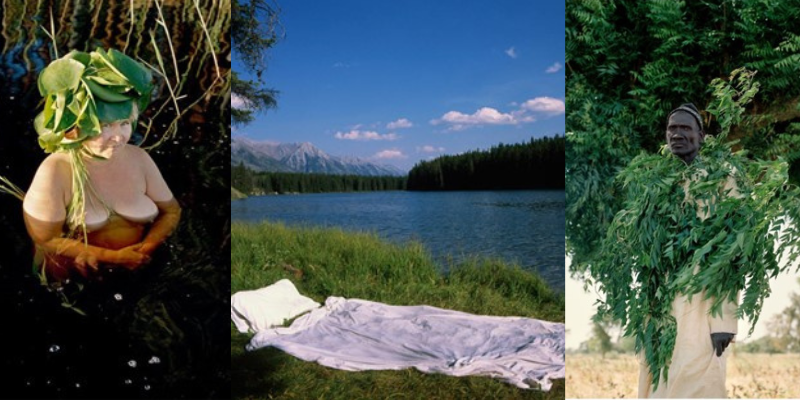Nature, Humans and Nature in Humans
Nature that holds together mountains, waterfalls, forests, and entire ecosystems is also responsible for the creation of humans. A product of evolution, everything about the human body is a work of intricate architecture at the hands of natural phenomena- and the resemblances are everywhere. The way veins and nerve networks resemble drainage systems of rivers, or the rings found in the barks of trees sharing strong similarities with our fingerprints- or the famous Fibonacci sequence replicating itself across flowers, hands, faces and so much more. We are a result of nature’s creativity- and art, sometimes, likes to serve as a reminder. Artists across the world have been fascinated by these correlations and have often been the first ones to realise the growing distance between humans and nature. Hence, many artists have chosen to portray this inextricably linked relationship that humans share with nature- and how some answers, may lie in going back.
‘Eyes As Big As Plates’
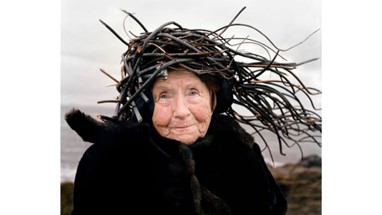
Source: BBC
‘Eyes As Big As Plates’, pays homage to Norwegian folklore through its name reference to the wide-eyed dog or troll that lives under bridges. The collection features photographs that reverberate with life, a life closely attached to nature. Starring persons in their 50s to their 70s and 80s, the collaborative piece by artists Karoline Hjorth and Riitta Ikonen ties humanity back to their roots. From bodies covered in sheets of ice to seniors wearing crowns of tree branches, the pictures keep getting more immersive and interesting. One model wears a dress of leaves identical to the ones on tree branches that he is surrounded by, while another poses gracefully on a rock wearing a mask of spiky, leaves. Their eyes too, play a central role in making certain portraits interesting, conveying power, joy, and mischief through their expressions. The collection became a popular book by the artists, with a second volume in the works.
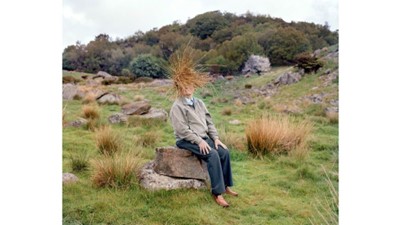
Source: BBC
The portraits in the collection represent an ancient, quiet harmony. The artists remark that the main reason behind deciding to use senior models was what they felt was a deeper connection that the models shared with nature and their surroundings owing to their time and experience. Senior models were also less common in media. The project has been described by the official page as follows: “Here nature acts as both content and context: characters literally inhabit the landscape wearing sculptures they create in collaboration with the artists.” Though they started with the idea to record interpretations of Norwegian folklore, the idea shifted to capture the lived experience of the individuals whose stories were severely lacking in media. Each photograph is accompanied by a short description that features the person’s interest, working to explain the photograph they have posed examples include, facts like ‘Marty has an in-depth knowledge of phragmites (a kind of reed), and was midway through cancer treatment when he was photographed near New York’ (100 Year Life, BBC). They assigned sets and characteristics to each model on the basis of their personality traits and experiences- with the project widening to many other areas such as Senegal and Finland. Shot on film, in natural light, the pictures capture the silver hair, wrinkled skin and laughter lines on the models’ faces beautifully.
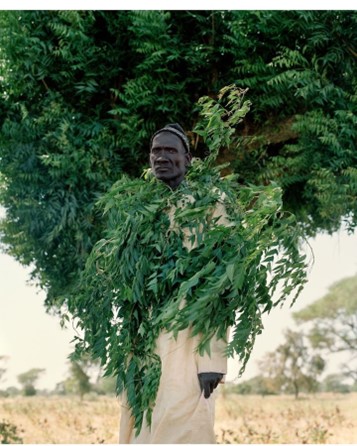
Source: BBC
The work inspires introspection- have we, as a species, forgotten to appreciate where we came from? There is an intermixing of the body and of the natural environment that feels too natural- despite the constructed nature of the shoots. Each of these individuals, though coming from all walks of life, blends seamlessly into the flora and fauna. They are born of it and shall return to it- their age, experience, and awareness of passing time, enhance the sense of deep trust between the two. The portraits also allow for exploration of aged persons beyond the stereotypical images assigned to them- they are people of full lives, rich in knowledge and up for fun in these images.
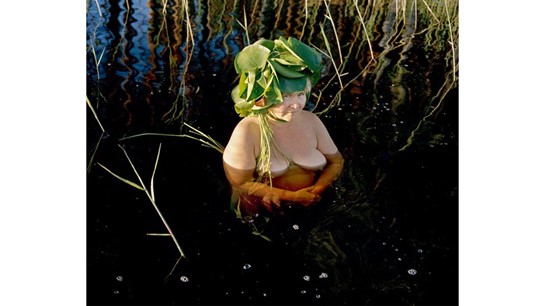
Source: BBC
‘Unmade Beds’
A popular idea that has been making its rounds on social media these days, is the concept of rest. As human beings, we have conditioned ourselves into working all throughout the year- when we are part of the same nature that has created all organisms that require periods of rest- sometimes for months. The idea of returning to nature, in joy, sorrow, playfulness and identifying with it- are themes that come through in the portraits within ‘Eyes as Big as Plates’. This encouragement to allow nature to hold and comfort, to find solace in it- are also ideas that has been long discussed. An interesting piece that raises conversation on the topic is Paola Dávila’s ‘Unmade Beds’ (2009).
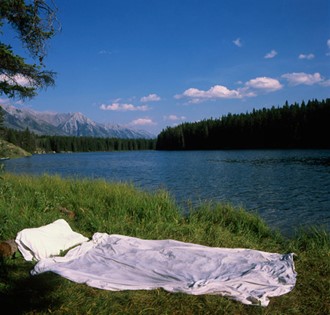
Source: Tumblr
Recorded in photographs, “Unmade Beds” features a series of pillows and sheets laid in natural environments. Messily arranged and looking as though someone left them in a hurry, the beds seem to represent the distance human society has attained from nature. The beds are found in grasslands with daisies, on a bed of rocks by the seashore, on wet ground with remnants of a body of water- though left behind, they are still there- as though inviting the viewer to climb back in and rest for a while.
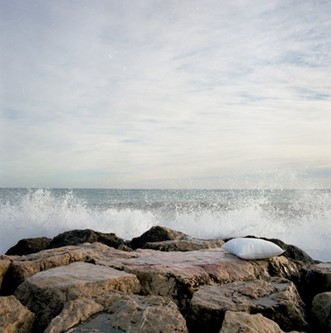
Source: Tumblr
The beds symbolise the above-mentioned notion of turning to nature or the birthplace of all creation- for rest and recuperation. The arrangement of the bedsheets marks the unfinished act of relaxation, something that has been abandoned by individuals for the hassle of daily life. The various landscapes the beds are placed in show a variety in terrain- some more comfortable than others, but all offering a play to lay your head. The piece is a gentle nudge, to find comfort in the very constituents that make us.
Both the photograph collections by Hjorth and Ikonen as well as Dávila, speak to an essential part of the human experience and existence. They place value in recognising the sources of origin, understanding traditional sources of knowledge and replenishing the human soul through this connection. The projects aim to acknowledge that we are all part of a shared space, where construction, recreation and rejuvenation all take place- however, only with active effort can we continue to establish this connection that has long been in practice across many communities. The ability to find peace in nature, to assimilate easily within its folds, comes from a deep-seated recognition of comfort in where we came from- the very same ether that we may return to.
SOURCES
- Eyes As Big As Plates.com
- BBC- Eyes As Big As Plates
- Paola Davila .net
Read Also:

